History
Fort Wilderness – What Might Have Been
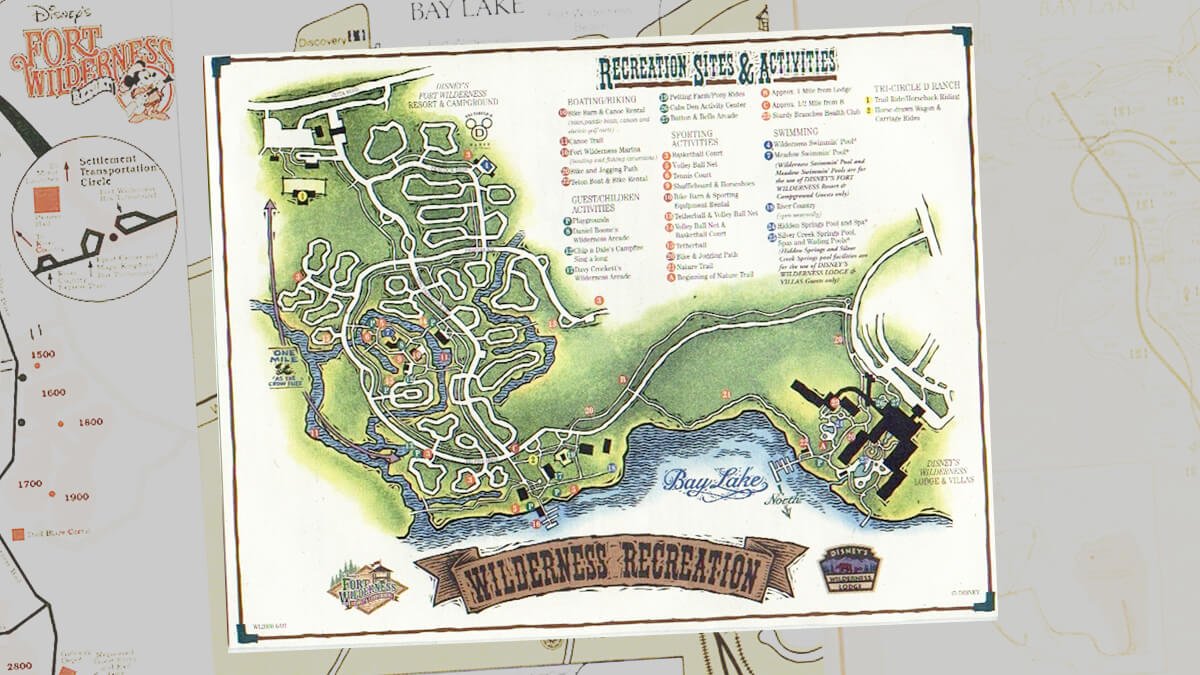
The Hoop-Dee-Doo Musical Revue at Fort Wilderness Campground has been silent for 27 months. On June 23, 2022, Pioneer Hall will come roaring back to life with three nightly presentations of this beloved musical dinner show (4 p.m., 6:15 p.m. & 8:30 p.m.)
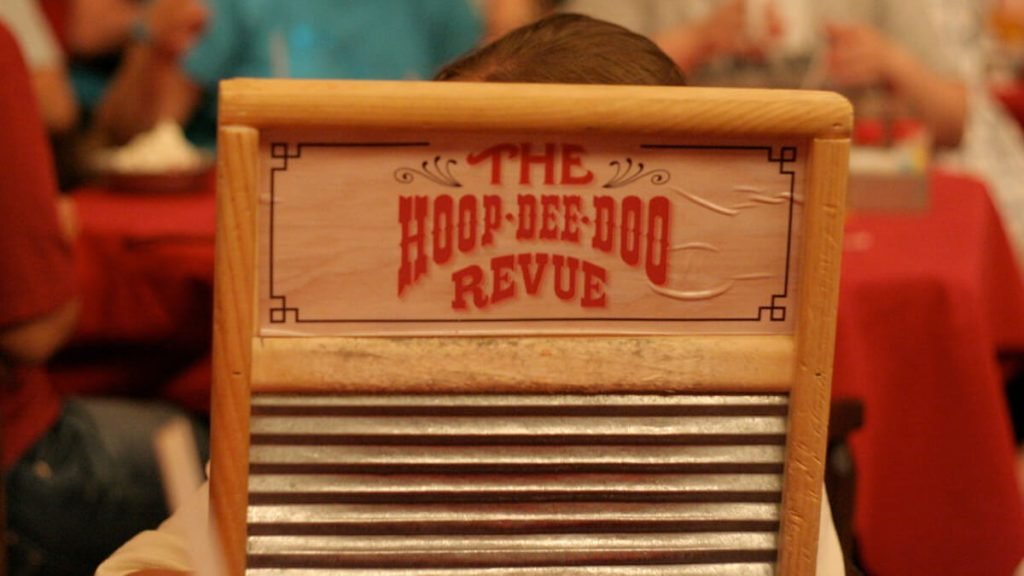
Building Fort Wilderness Campground
Just 9 months prior to the October 1971 opening of the WDW Resort – Dick Nunis (who had just been placed in charge of getting Disney World open on time) had just learned that little to no work had been done to date on the Disney’s Fort Wilderness resort’s campground.
Dick turned to Keith Kambak – a veteran Disneyland employee who had a degree in recreation – and effectively said “You’re coming to Florida with me. And you’re going to build a campground.”
When Keith pointed out that he had never built a campground before and began to ask questions like “What sort of budget am I working with?,” Dick growled “Don’t bother me with questions. Just go build that campground?”
Kambak gets on the ground in Orlando and then discovers why Nunis didn’t tell him what the budget was for Fort Wilderness.
There is no budget.
Disney World is so far over-budget at this point that there’s a real question – in the late Winter / early Spring of 1971 – whether the Resort will be able to find the funding necessary to complete construction of the Contemporary and/or the Polynesian Village Resorts. Let alone get started on building a new onsite campground.
But the PR material for Walt Disney World has been talking up camping at the Vacation Kingdom for over 5 years now. Saying things like …
Walt Disney World will offer a whole new vacation way of life. In addition to exploring the Magic Kingdom theme park, Guests will have the opportunity to frolic in Bay Lake & Seven Seas Lagoon. This 650-acre expanse of water, lined with four miles of white sand beaches, will ideal for swimming, sailing, fishing and water skiing.
Meanwhile over at Fort Wilderness, visitors will find 600 acres of campgrounds, boating, nature trails, park-like recreation areas and the Tri-Circle D Ranch, where saddle horses are available.
People have already booked trips to Disney World because they wanted to go camping at that Resort. Go swimming in Bay Lake. So Disney now has to figure out how to deliver on what it said in all those press release.
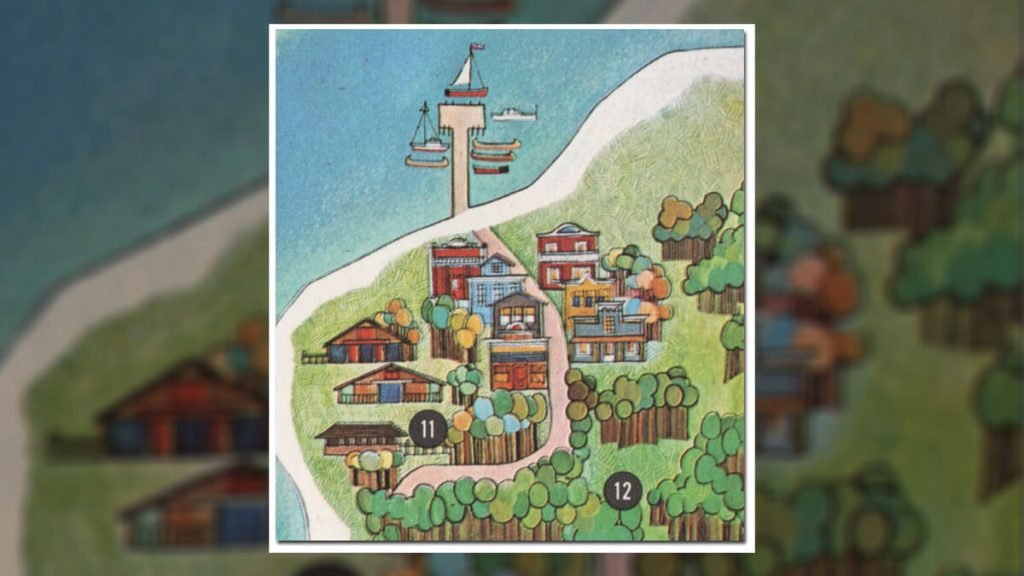
Luckily, Keith Kambak is clever, resourceful and slightly dishonest. He becomes famous for waiting ‘til the construction workers go home at 5 and then sending trucks into the Magic Kingdom worksite to steal lumber & bags of cement. Which is what Keith then uses to build Fort Wilderness’ original reception center and the first 200 campsites.
Opening Disney’s Fort Wilderness Campground
Mind you – Fort Wilderness isn’t ready for opening day.
Hell, this campground really isn’t ready when in finally throws open its doors on November 19, 1971 – seven weeks after the first group of Guests pushed through the turnstiles over at the Magic Kingdom.
But even if Fort Wilderness isn’t really ready for prime time, campers absolutely love the place right out of the gate. It initially costs $11 a night to stay there. And the people who stay there are really excited that – as part of that $11 fee – they get access to the entire WDW transportation system. The monorails, the launches, the motor coaches.
And given that demand for those 200 campsites far exceeds the available supply, Walt Disney World quickly begins to expand Fort Wilderness. In October of 1972 (just in time for the celebration of the Resort’s grand opening a year previous), it is announced that Disney World’s onsite campground will more than doubling in size. Adding an additional 300 sites.
By now, WDW managers have noticed an interesting phenomenon. Guests who are staying at the Contemporary & Polynesian Village will make a special trip over to Fort Wilderness over the course of their WDW vacation just to check the place out.
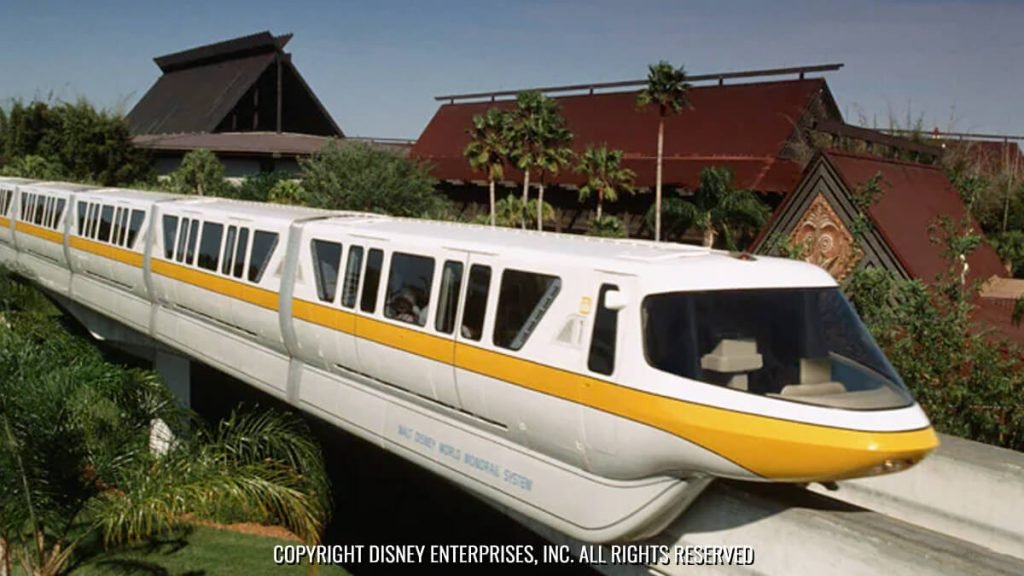
Mind you, there isn’t much to see at this point. A handful of campsites and a trading post. But the Imagineers make note of the steady stream of daily visitors that Fort Wilderness has been experiencing and then decides … Well, let’s give them something to see.
Fort Wilderness Railroad
So a plan is formed. First and foremost, the Imagineers decide to build a transportation system that will take Guests from Fort Wilderness’ reception area to the south all the way up to the campground’s recreation area along Bay Lake. This 3-mile-long round-trip narrow gauge rail line (which will be serviced by four steam trains with 5 cars each – capable of carrying 90 passengers at a time) will carry Guests from their campsites to the reception area and then down to the waterfront.
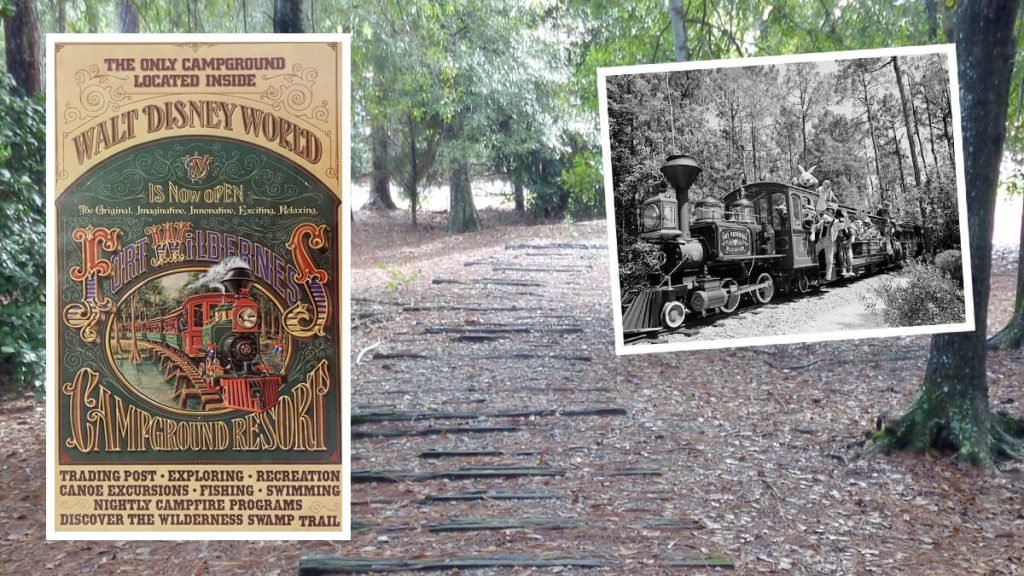
That rail line gets installed over the Summer of 1973. It’s field-tested in the Fall of that same year and finally fully operational just time for Christmas Week 1973 / 1st week of January 1974.
Tri-Circle D Ranch
There’s another reason that the Imagineers built that rail line. That’s because they’re looking to develop the middle-most section of Fort Wilderness. This area – known as the Settlement – initially holds just the Tri-Circle D Ranch (which is where the horses that pull the trolleys on Main Street over at the Magic Kingdom spend their days off. Likewise Fort Wilderness’ petting zoo).
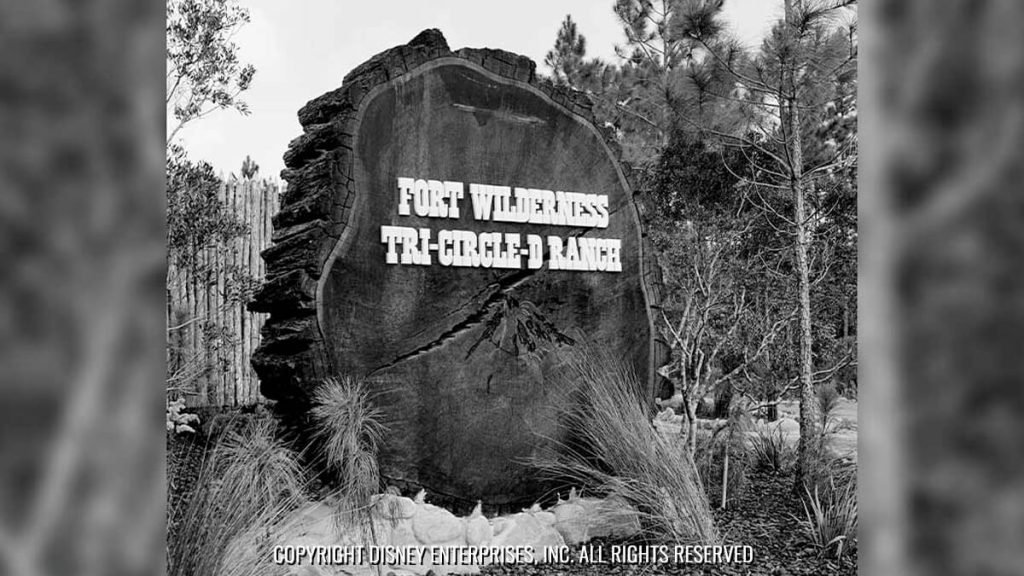
But because so many Guests staying at the Contemporary & the Polynesian Village are making a special trip over to Fort Wilderness as part of their WDW vacation just to see what there is to see over there … the Imagineers give them something to see.
Pioneer Hall
The first thing up out of the ground is Pioneer Hall, which is constructed out of 1,283 hand-fitted pine logs from Montana and 70 tons of stones from North Carolina. This venue first opens its doors on April 1, 1974. And initially there is absolutely no mention of the “Hoop-Dee-Doo Musical Revue.”
Instead, Pioneer Hall is described as having “ … a 250-seat steak house where ranch-style barbecues will be offered, plus a 150-seat snack bar, theme shops and an arcade for after-hours recreation.”
Mind you, if you dig down in the original Pioneer Hall press release (which initially says that this complex will be up & running by February of 1974), there is mention that this “new service-oriented campground complex” would be fully equipped when it came to the presenting of musical stage shows.
But at this point (The Spring of 1974), there’s honestly no talk of the “Hoop-Dee-Doo.” There is – however – all sorts of talk of the other components of Fort Wilderness’ Settlement project. Which are supposed to begin construction shortly.
By next summer, Fort Wilderness’ steam train system will connect the campground’s reception area and its waterfront recreation facilities with the Fort Wilderness Stockade and Western Town. Where complete dining, shopping and entertainment facilities are being built in phases.
And a year or so after Western Town opened at Fort Wilderness opened, the Imagineers then wanted to build (this is from the Company’s 1973 annual report) …
… the Fort Wilderness “swimming hole,” a major recreational facility.
The Roost and River Country
Wait. It gets better. WDW managers – at this point – were actually talking about building a fun house onsite at Fort Wilderness. One that would feature show scenes designed by Marc Davis and would be housed in an eccentric-looking mansion that would be called “The Roost.”
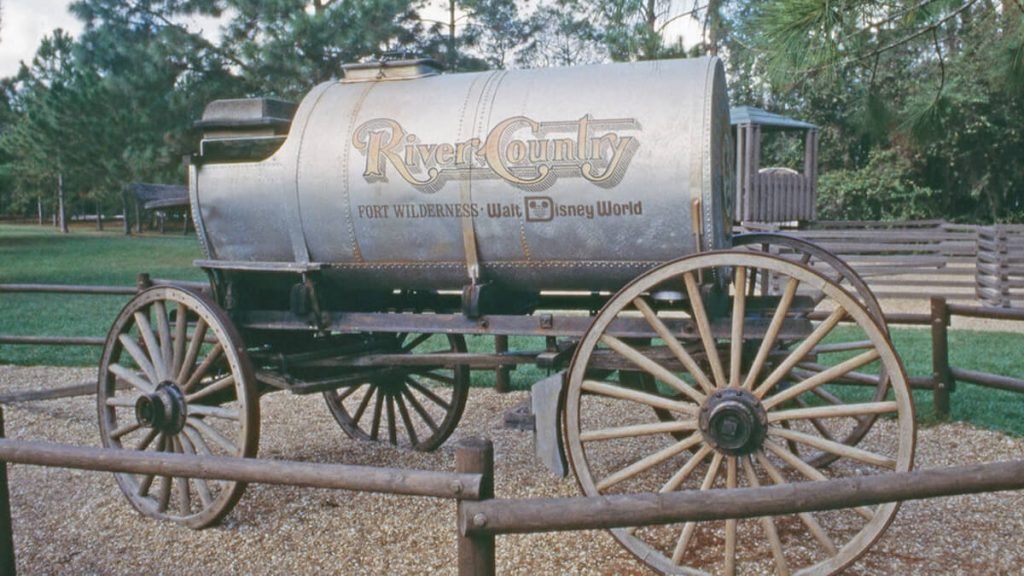
Once “The Roost” was opened (This project was projected to be completed by the Summer of 1977, with Fort Wilderness’ swimming hole – eventually called “River Country” – opening the previous year. Just in time for America’s bicentennial), WDW officials eventually envisioned selling visitors to their Florida vacation kingdom a special Fort Wilderness ticket book. Which would then give Guests a full day of fun at Fort Wilderness.
- Take the bus over to Fort Wilderness’ reception area
- Then take the train down to that campground’s settlement section
- Swim in the morning at River Country
- Spend the afternoon exploring the Roost, hiking Fort Wilderness’ nature trails, visiting the petting zoo and/or go horseback riding
- Catch a performance of the “Hoop-Dee-Doo Musical Revue” at Pioneer Hall
- Do some souvenir shopping in Frontier Town
- Walk down to the waterfront at Bay Lake after dusk and then catch a presentation of the “Electrical Water Pageant”
- Grab the train and head back up to Fort Wilderness’ reception area
- Take a motor coach back to your hotel
1973 Arab Oil Embargo Impacts Fort Wilderness Development
This was the plan as the Fall of 1973. Which then – of course – is when the Arab Oil Embargo got underway. And attendance levels at Walt Disney World suddenly fell off by 20% because of the odd / even gas rationing that was going on at that time. So many Guests were worried that – if they began driving down to Walt Disney World – that they then wouldn’t be able to find enough gasoline en route to complete their journey to the Resort.
The Arab Oil Embargo obviously had a huge impact on Fort Wilderness’ previously-stellar occupancy levels (Typically at 100% capacity from Christmas Week through Labor Day) because of the number of people who’d drive down to Disney World pulling a trailer. Occupancy levels dropped to 70% and managers there got scared.
The other components of the Fort Wilderness’ Settlement area – the Stockade and Western Town, to be specific – that were to follow Pioneer Hall got placed on hold. As did Marc Davis’ The Roost project.
As for “River Country” … I’m told that the only reason that project went forward is because the Company had already ordered the 2500 feet of flume that would eventually be used to build Whoop-n-Holler Hollow.
Fascinating to think what might have been around Pioneer Hall if the Arab Oil Embargo hadn’t tripped up WDW’s executives to turn Fort Wilderness into a day-long destination for Disney World visitors to experience over their Florida vacation.
One final stat from a Disney annual report from 1974 that just fascinated me:
“Pioneer Hall,” a major entertainment, restaurant and arcade facility, opened in March and soon established itself as a popular guest attraction and profitable operation. Twice as many guests come from the resort-hotels to attend the dinner show in Pioneer Hall than from the campgrounds themselves.
Just so you know: WDW didn’t entirely abandon its plans to turn Fort Wilderness into a day-long vacation destination.
Opening River Country at Fort Wilderness Campground
River Country opened at Fort Wilderness on June 19, 1976. This five-acre water park quickly started drawing – on average — 4,700 Guests per day during the Summer months of 1976. Interestingly enough, there is no drop in attendance levels over at the Magic Kingdom after the opening of River Country. Which means that this new water park is drawing an additional nearly 5000 people to the Resort every day. Which means that River Country immediately became a huge new profit center at WDW.
Downside … All of these additional people coming to Fort Wilderness every day needing to get down to the water park just as most people staying at WDW’s campsite want to get over to the Magic kingdom overwhelm the campground’s steam train line / eventually causing the system to fail.
Imagineers immediately begin looking for ways to expand Fort Wilderness. Company’s 1976 annual report mentions plans for “ … more water rides, an additional raft ride or a two-man boat ride.”
Likewise, to try and handle the crowds who are now pouring int Fort Wilderness each day, the Imagineers revisit the idea of building Frontiertown in the stretch of land that exists between Pioneer Hall and River Country.
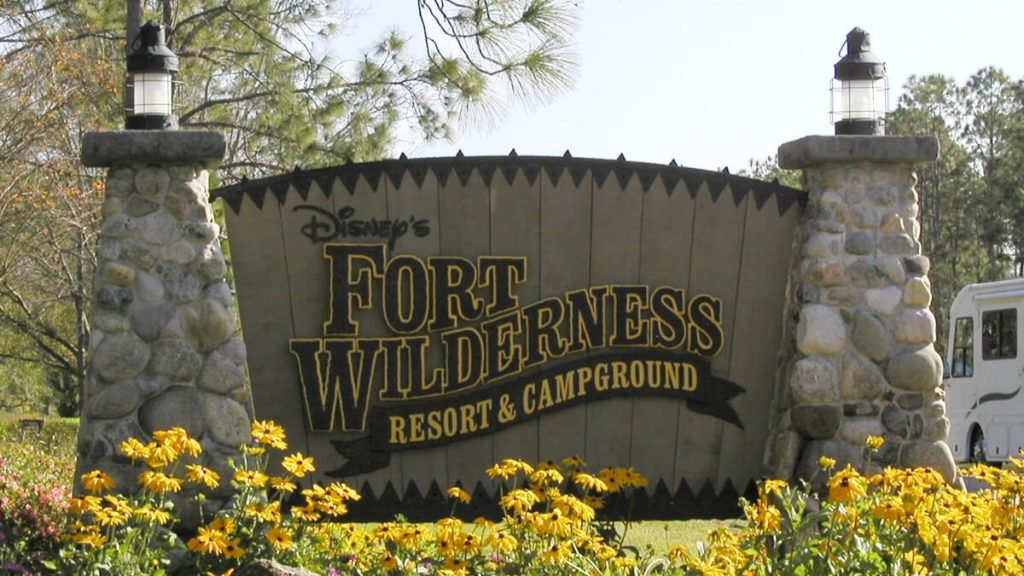
But then the Company gets serious about going forward with construction of EPCOT Center. And all available funding for future expansion at the WDW Resort – including the funds that had been set aside for Fort Wilderness – gets funneled into WDW’s second gate.
This article is based on research for The Disney Dish Podcast “Episode 378”, published on June 13, 2022. The Disney Dish Podcast is part of the Jim Hill Media Podcast Network.
History
The Evolution and History of Mickey’s ToonTown

Disneyland in Anaheim, California, holds a special place in the hearts of Disney fans worldwide, I mean heck, it’s where the magic began after all. Over the years it’s become a place that people visit in search of memorable experiences. One fan favorite area of the park is Mickey’s Toontown, a unique land that lets guests step right into the colorful, “Toony” world of Disney animation. With the recent reimagining of the land and the introduction of Micky and Minnies Runaway Railway, have you ever wondered how this land came to be?
There is a fascinating backstory of how Mickey’s Toontown came into existence. It’s a tale of strategic vision, the influence of Disney executives, and a commitment to meeting the needs of Disney’s valued guests.
The Beginning: Mickey’s Birthdayland
The story of Mickey’s Toontown starts with Mickey’s Birthdayland at Walt Disney World’s Magic Kingdom. Opened in 1988 to celebrate Mickey Mouse’s 60th birthday, this temporary attraction was met with such overwhelming popularity that it inspired Disney executives to think bigger. The idea was to create a permanent, immersive land where guests could step into the animated world of Mickey Mouse and his friends.
In the early ’90s, Disneyland was in need of a refresh. Michael Eisner, the visionary leader of The Walt Disney Company at the time, had an audacious idea: create a brand-new land in Disneyland that would celebrate Disney characters in a whole new way. This was the birth of Mickey’s Toontown.
Initially, Disney’s creative minds toyed with various concepts, including the idea of crafting a 100-Acre Woods or a land inspired by the Muppets. However, the turning point came when they considered the success of “Who Framed Roger Rabbit.” This film’s popularity and the desire to capitalize on contemporary trends set the stage for Toontown’s creation.
From Concept to Reality: The Birth of Toontown
In 1993, Mickey’s Toontown opened its gates at Disneyland, marking the first time in Disney Park history where guests could experience a fully realized, three-dimensional world of animation. This new land was not just a collection of attractions but a living, breathing community where Disney characters “lived,” worked, and played.
Building Challenges: Innovative Solutions
The design of Mickey’s Toontown broke new ground in theme park aesthetics. Imagineers were tasked with bringing the two-dimensional world of cartoons into a three-dimensional space. This led to the creation of over 2000 custom-built props and structures that embodied the ‘squash and stretch’ principle of animation, giving Toontown its distinctiveness.
And then there was also the challenge of hiding the Team Disney Anaheim building, which bore a striking resemblance to a giant hotdog. The Imagineers had to think creatively, using balloon tests and imaginative landscaping to seamlessly integrate Toontown into the larger park.

Key Attractions: Bringing Animation to Life
Mickey’s Toontown featured several groundbreaking attractions. “Roger Rabbit’s Car Toon Spin,” inspired by the movie “Who Framed Roger Rabbit,” became a staple of Toontown, offering an innovative ride experience. Gadget’s Go-Coaster, though initially conceived as a Rescue Rangers-themed ride, became a hit with younger visitors, proving that innovative design could create memorable experiences for all ages.
Another crown jewel of Toontown is Mickey’s House, a walkthrough attraction that allowed guests to explore the home of Mickey Mouse himself. This attraction was more than just a house; it was a carefully crafted piece of Disney lore. The house was designed in the American Craftsman style, reflecting the era when Mickey would have theoretically purchased his first home in Hollywood. The attention to detail was meticulous, with over 2000 hand-crafted, custom-built props, ensuring that every corner of the house was brimming with character and charm. Interestingly, the design of Mickey’s House was inspired by a real home in Wichita Falls, making it a unique blend of real-world inspiration and Disney magic.
Mickey’s House also showcased Disney’s commitment to creating interactive and engaging experiences. Guests could make themselves at home, sitting in Mickey’s chair, listening to the radio, and exploring the many mementos and references to Mickey’s animated adventures throughout the years. This approach to attraction design – where storytelling and interactivity merged seamlessly – was a defining characteristic of ToonTown’s success.

Executive Decisions: Shaping ToonTown’s Unique Attractions
The development of Mickey’s Toontown wasn’t just about creative imagination; it was significantly influenced by strategic decisions from Disney executives. One notable input came from Jeffrey Katzenberg, who suggested incorporating a Rescue Rangers-themed ride. This idea was a reflection of the broader Disney strategy to integrate popular contemporary characters and themes into the park, ensuring that the attractions remained relevant and engaging for visitors.
In addition to Katzenberg’s influence, Frank Wells, the then-President of The Walt Disney Company, played a key role in the strategic launch of Toontown’s attractions. His decision to delay the opening of “Roger Rabbit’s Car Toon Spin” until a year after Toontown’s debut was a calculated move. It was designed to maintain public interest in the park by offering new experiences over time, thereby giving guests more reasons to return to Disneyland.
These executive decisions highlight the careful planning and foresight that went into making Toontown a dynamic and continuously appealing part of Disneyland. By integrating current trends and strategically planning the rollout of attractions, Disney executives ensured that Toontown would not only capture the hearts of visitors upon its opening but would continue to draw them back for new experiences in the years to follow.
Global Influence: Toontown’s Worldwide Appeal
The concept of Mickey’s Toontown resonated so strongly that it was replicated at Tokyo Disneyland and influenced elements in Disneyland Paris and Hong Kong Disneyland. Each park’s version of Toontown maintained the core essence of the original while adapting to its cultural and logistical environment.
Evolution and Reimagining: Toontown Today
As we approach the present day, Mickey’s Toontown has recently undergone a significant reimagining to welcome “Mickey & Minnie’s Runaway Railway” in 2023. This refurbishment aimed to enhance the land’s interactivity and appeal to a new generation of Disney fans, all while retaining the charm that has made ToonTown a beloved destination for nearly three decades.

Dive Deeper into ToonTown’s Story
Want to know more about Mickey’s Toontown and hear some fascinating behind-the-scenes stories, then check out the latest episode of Disney Unpacked on Patreon @JimHillMedia. In this episode, the main Imagineer who worked on the Toontown project shares lots of interesting stories and details that you can’t find anywhere else. It’s full of great information and fun facts, so be sure to give it a listen!
History
Unpacking the History of the Pixar Place Hotel

Pixar Place Hotel, the newly unveiled 15-story tower at the Disneyland Resort, has been making waves in the Disney community. With its unique Pixar-themed design, it promises to be a favorite among visitors.
However, before we delve into this exciting addition to the Disneyland Resort, let’s take a look at the fascinating history of this remarkable hotel.
The Emergence of the Disneyland Hotel
To truly appreciate the story of the Pixar Place Hotel, we must turn back the clock to the early days of Disneyland. While Walt Disney had the visionary ideas and funding to create the iconic theme park, he faced a challenge when it came to providing accommodations for the park’s visitors. This is where his friend Jack Wrather enters the picture.
Jack Wrather, a fellow pioneer in the television industry, stepped in to assist Walt Disney in realizing his dream. Thanks to the success of the “Lassie” TV show produced by Wrather’s company, he had the financial means to build a hotel right across from Disneyland.
The result was the Disneyland Hotel, which opened its doors in October 1955. Interestingly, the early incarnation of this hotel had more of a motel feel than a hotel, with two-story buildings reminiscent of the roadside motels popular during the 1950s. The initial Disneyland Hotel consisted of modest structures that catered to visitors looking for affordable lodging close to the park. While the rooms were basic, it marked the beginning of something extraordinary.
The Evolution: From Emerald of Anaheim to Paradise Pier
As Disneyland’s popularity continued to soar, so did the demand for expansion and improved accommodations. In 1962, the addition of an 11-story tower transformed the Disneyland Hotel, marking a significant transition from a motel to a full-fledged hotel.
The addition of the 11-story tower elevated the Disneyland Hotel into a more prominent presence on the Anaheim skyline. At the time, it was the tallest structure in all of Orange County. The hotel’s prime location across from Disneyland made it an ideal choice for visitors. With the introduction of the monorail linking the park and the hotel, accessibility became even more convenient. Unique features like the Japanese-themed reflecting pools added to the hotel’s charm, reflecting a cultural influence that extended beyond Disney’s borders.
Japanese Tourism and Its Impact
During the 1960s and 1970s, Disneyland was attracting visitors from all corners of the world, including Japan. A significant number of Japanese tourists flocked to Anaheim to experience Walt Disney’s creation. To cater to this growing market, it wasn’t just the Disneyland Hotel that aimed to capture the attention of Japanese tourists. The Japanese Village in Buena Park, inspired by a similar attraction in Nara, Japan, was another significant spot.
These attractions sought to provide a taste of Japanese culture and hospitality, showcasing elements like tea ceremonies and beautiful ponds with rare carp and black swans. However, the Japanese Village closed its doors in 1975, likely due to the highly competitive nature of the Southern California tourist market.
The Emergence of the Emerald of Anaheim
With the surge in Japanese tourism, an opportunity arose—the construction of the Emerald of Anaheim, later known as the Disneyland Pacific Hotel. In May 1984, this 15-story hotel opened its doors.
What made the Emerald unique was its ownership. It was built not by The Walt Disney Company or the Oriental Land Company (which operated Tokyo Disneyland) but by the Tokyu Group. This group of Japanese businessmen already had a pair of hotels in Hawaii and saw potential in Anaheim’s proximity to Disneyland. Thus, they decided to embark on this new venture, specifically designed to cater to Japanese tourists looking to experience Southern California.
Financial Challenges and a Changing Landscape
The late 1980s brought about two significant financial crises in Japan—the crash of the NIKKEI stock market and the collapse of the Japanese real estate market. These crises had far-reaching effects, causing Japanese tourists to postpone or cancel their trips to the United States. As a result, reservations at the Emerald of Anaheim dwindled.
To adapt to these challenging times, the Tokyu Group merged the Emerald brand with its Pacific hotel chain, attempting to weather the storm. However, the financial turmoil took its toll on the Emerald, and changes were imminent.
The Transition to the Disneyland Pacific Hotel
In 1995, The Walt Disney Company took a significant step by purchasing the hotel formerly known as the Emerald of Anaheim for $35 million. This acquisition marked a change in the hotel’s fortunes. With Disney now in control, the hotel underwent a name change, becoming the Disneyland Pacific Hotel.
Transformation to Paradise Pier
The next phase of transformation occurred when Disney decided to rebrand the hotel as Paradise Pier Hotel. This decision aligned with Disney’s broader vision for the Disneyland Resort.
While the structural changes were limited, the hotel underwent a significant cosmetic makeover. Its exterior was painted to complement the color scheme of Paradise Pier, and wave-shaped crenellations adorned the rooftop, creating an illusion of seaside charm. This transformation was Disney’s attempt to seamlessly integrate the hotel into the Paradise Pier theme of Disney’s California Adventure Park.
Looking Beyond Paradise Pier: The Shift to Pixar Place
In 2018, Disneyland Resort rebranded Paradise Pier as Pixar Pier, a thematic area dedicated to celebrating the beloved characters and stories from Pixar Animation Studios. As a part of this transition, it became evident that the hotel formally known as the Disneyland Pacific Hotel could no longer maintain its Paradise Pier theme.
With Pixar Pier in full swing and two successful Pixar-themed hotels (Toy Story Hotels in Shanghai Disneyland and Tokyo Disneyland), Disney decided to embark on a new venture—a hotel that would celebrate the vast world of Pixar. The result is Pixar Place Hotel, a 15-story tower that embraces the characters and stories from multiple Pixar movies and shorts. This fully Pixar-themed hotel is a first of its kind in the United States.
The Future of Pixar Place and Disneyland Resort
As we look ahead to the future, the Disneyland Resort continues to evolve. The recent news of a proposed $1.9 billion expansion as part of the Disneyland Forward project indicates that the area surrounding Pixar Place is expected to see further changes. Disneyland’s rich history and innovative spirit continue to shape its destiny.
In conclusion, the history of the Pixar Place Hotel is a testament to the ever-changing landscape of Disneyland Resort. From its humble beginnings as the Disneyland Hotel to its transformation into the fully Pixar-themed Pixar Place Hotel, this establishment has undergone several iterations. As Disneyland Resort continues to grow and adapt, we can only imagine what exciting developments lie ahead for this iconic destination.
If you want to hear more stories about the History of the Pixar Place hotel, check our special edition of Disney Unpacked over on YouTube.
Stay tuned for more updates and developments as we continue to explore the fascinating world of Disney, one story at a time.
History
From Birthday Wishes to Toontown Dreams: How Toontown Came to Be

In the latest release of Episode 4 of Disney Unpacked, Len and I return, joined as always by Disney Imagineering legend, Jim Shull. This two-part episode covers all things Mickey’s Birthday Land and how it ultimately led to the inspiration behind Disneyland’s fan-favorite land, “Toontown”. But let’s not get ahead of ourselves here. It all starts in the early days at Disneyland.
Early Challenges in Meeting Mickey
Picture this: it’s the late 1970s and early 1980s, and you’re at Disneyland. You want to meet the one and only Mickey Mouse, but there’s no clear way to make it happen. You rely on Character Guides, those daily printed sheets that point you in Mickey’s general direction. But let’s be honest, it was like finding a needle in a haystack. Sometimes, you got lucky; other times, not so much.

Mickey’s Birthdayland: A Birthday Wish that Came True
Fast forward to the late 1980s. Disney World faced a big challenge. The Disney-MGM Studios Theme Park was under construction, with the company’s marketing machine in full swing, hyping up the opening of Walt Disney World’s third theme park, MGM Studios, in the Spring of 1989. This extensive marketing meant that many people were opting to postpone their family’s next trip to Walt Disney World until the following year. Walt Disney World needed something compelling to motivate guests to visit Florida in 1988, the year before Disney MGM Studios opened.
Enter stage left, Mickey’s Birthdayland. For the first time ever, an entire land was dedicated to a single character – and not just any character, but the mouse who started it all. Meeting Mickey was no longer a game of chance; it was practically guaranteed.

The Birth of Birthdayland: Creative Brilliance Meets Practicality
In this episode, we dissect the birth of Mickey’s Birthdayland, an initiative that went beyond celebrating a birthday. It was a calculated move, driven by guest feedback and a need to address issues dating back to 1971. Imagineers faced the monumental task of designing an experience that honored Mickey while efficiently managing the crowds. This required the perfect blend of creative flair and logistical prowess – a hallmark of Disney’s approach to theme park design.
Evolution: From Birthdayland to Toontown
The success of Mickey’s Birthdayland was a real game-changer, setting the stage for the birth of Toontown – an entire land that elevated character-centric areas to monumental new heights. Toontown wasn’t merely a spot to meet characters; it was an immersive experience that brought Disney animation to life. In the episode, we explore its innovative designs, playful architecture, and how every nook and cranny tells a story.

Impact on Disney Parks and Guests
Mickey’s Birthdayland and Toontown didn’t just reshape the physical landscape of Disney parks; they transformed the very essence of the guest experience. These lands introduced groundbreaking ways for visitors to connect with their beloved characters, making their Disney vacations even more unforgettable.
Beyond Attractions: A Cultural Influence
But the influence of these lands goes beyond mere attractions. Our episode delves into how Mickey’s Birthdayland and Toontown left an indelible mark on Disney’s culture, reflecting the company’s relentless dedication to innovation and guest satisfaction. It’s a journey into how a single idea can grow into a cherished cornerstone of the Disney Park experience.

Unwrapping the Full Story of Mickey’s Birthdayland
Our two-part episode of Disney Unpacked is available for your viewing pleasure on our Patreon page. And for those seeking a quicker Disney fix, we’ve got a condensed version waiting for you on our YouTube channel. Thank you for being a part of our Disney Unpacked community. Stay tuned for more episodes as we continue to “Unpack” the fascinating world of Disney, one story at a time.
-

 History10 months ago
History10 months agoThe Evolution and History of Mickey’s ToonTown
-

 History11 months ago
History11 months agoUnpacking the History of the Pixar Place Hotel
-

 History11 months ago
History11 months agoFrom Birthday Wishes to Toontown Dreams: How Toontown Came to Be
-

 Film & Movies8 months ago
Film & Movies8 months agoHow Disney’s “Bambi” led to the creation of Smokey Bear
-

 News & Press Releases10 months ago
News & Press Releases10 months agoNew Updates and Exclusive Content from Jim Hill Media: Disney, Universal, and More
-

 Merchandise8 months ago
Merchandise8 months agoIntroducing “I Want That Too” – The Ultimate Disney Merchandise Podcast
-

 Theme Parks & Themed Entertainment3 months ago
Theme Parks & Themed Entertainment3 months agoDisney’s Forgotten Halloween Event: The Original Little Monsters on Main Street
-

 Film & Movies3 months ago
Film & Movies3 months agoHow “An American Tail” Led to Disney’s “Hocus Pocus”



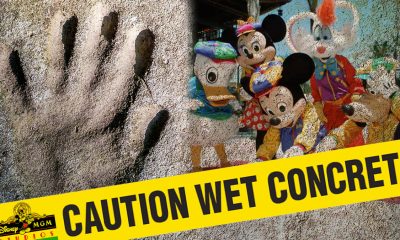

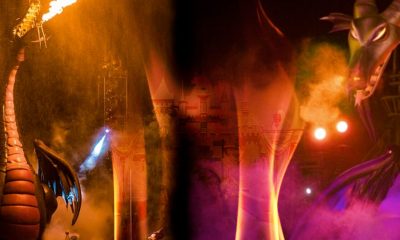

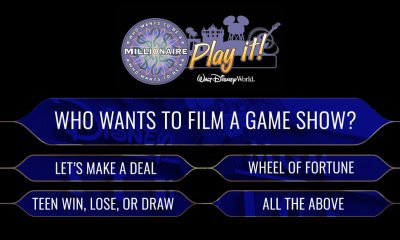

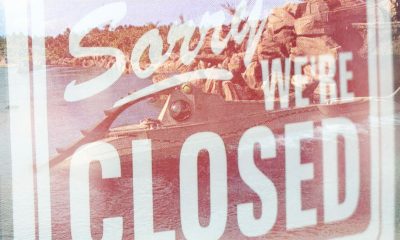









auratkachakkar
November 4, 2022 at 9:04 am
I’m told that the only reason that project went forward is because the Company had already ordered the 2500 feet of flume that would eventually be used to build Whoop-n-Holler Hollow.